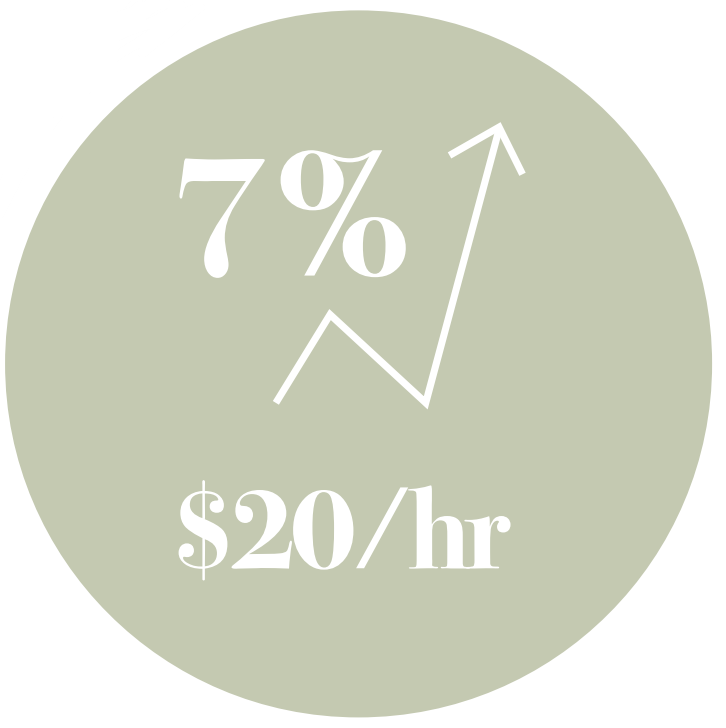On May 18 the AISD board of trustees unanimously approved raises for all AISD staff, according to the district’s website. The compensation package included increasing the minimum wage for all staff to $20 per hour and a 7% increase in salary for teachers, Special Education employees, librarians, instructional coaches, and counselors. The package also included a 5% raise for Administrative Professionals and a 3% raise for executive directors.
According to the AISD website, these adjustments are projected to cause a $53 million deficit. Clay Robison, a spokesperson for the Texas State Teachers Association (TSTA), said this deficit is due to the lack of public education funding from the Texas legislature.
“The Texas legislature and the governor do not spend enough money on public education, so it’s up to school districts like Austin ISD to scramble for additional funding,” Robison said. “[AISD] recognizes they need to pay their teachers and their bus drivers and their cafeteria workers more because many of these school employees are finding they can no longer afford to work for the public education system. They have bills to pay like everybody else.”
Arati Singh is an AISD Trustee At-Large, which means she represents the whole school district. She says the $53 million deficit coupled with the lack of legislative funding means the district will need to rely on its savings.
“We knew that we were going to be having to dig into our savings to attract and retain our staff if the legislature did not put any new money into teacher salaries and public education,” Singh said. “We thought we would get at least $6 million, which is not a whole heck of a lot. We didn’t get a dime. And so it really has put us in a hard situation where we know we have to pay our staff more.”
Texas pays teachers from $7,000 to $7,700 less than the national average. A survey conducted by TSTA in the spring of 2022 revealed that 40% of respondents worked additional jobs during the school year. Even though teachers recognize that their quality of teaching may suffer from working more than one job, they don’t have a choice because they need to support their families, according to Robison. Without the package, Robinson fears that more and more teachers will leave the profession.
“These teachers otherwise may have given up and taken on early retirement, or tried to quit, or said, ‘I just need to do something else,’” Robison said.
Because the average Texas teacher salary lags behind the national average, and the cost of living in Austin is above the national average, Singh wanted the raise given to AISD teachers to be much higher. However, Texas ranks in the bottom 10 of per pupil funding in the country, so without money from the state, there isn’t a realistic way to increase teacher salaries, according to Singh.
“We’ve seen unprecedented inflation like we haven’t seen in several years,” Singh said. “So the cost of running a district has gone up, like maybe six or seven percent. But we haven’t gotten any increase in funding to be able to fill that need. It’s really a shame. We really do need to increase the salaries way more, but there’s just not a way to physically do that right now without the state allowing us to keep more of our tax money.”
In December 2022, Texas representative Donna Howard filed House Bill 882 with hopes of increasing per pupil allotment in Texas school districts to account for inflation, but the bill did not pass. According to her, the bill’s opposition was partly due to Governor Greg Abbott’s desire to pass vouchers, which are aimed at supplementing private school tuition for some Texas families.
“He’s [Abbot] holding our public school districts hostage,” Singh said. “Basically, it’s a lot of fighting that’s happening at the Capitol at the expense of students.”
According to the 2022 Charles Butt Foundation Texas Teachers Poll, 80% of teachers experience insufficient planning time and take on non-instructional responsibilities. LASA freshman John Lozier has had many teachers leave the profession midway through his past years of school. He hopes the pay raise will increase teacher retention.
“I believe that the most common reason for leaving was because of dislike for the administration and AISD, including pay and other workplace issues,” Lozier said.
One of the most memorable experiences with teacher vacancies to Lozier was in one of his middle school classes. During the last school year one of his teachers was unable to work, and without another certified teacher to fill their place, the burden was placed on an existing educator.
“My 8th grade geometry teacher ended up leaving in the middle of the school year due to health issues, and the Algebra teacher had to come in and help teach the class,” Lozier said. “After a few months of doing this, the Algebra teacher stopped teaching our class, because of parents annoying her and the fact that she wasn’t even getting paid for all the extra work. Hopefully, this package will make it a little easier for teachers to do things like this from the extra pay.”
Singh says the raise is already helping to fill vacancies within the district. She says around this time last year, the district had 1,200 vacancies, but now that number is down to 80. Singh hopes to decrease the number of classes in the district being taught by non-certified teachers.
“We have many schools where we did not have certified teachers in the classroom for much of the year, last year, and even into this year,” Singh said. “I know one middle school where the principal was teaching a math class in the cafeteria, and that’s not the vision of public education. We know we have to prepare our students for success, and you need a certified teacher to do that.”






